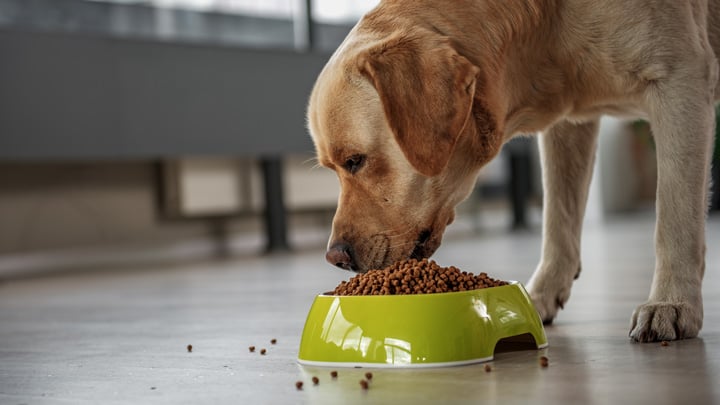
The Role of Proteins, Fats, and Carbohydrates in Animal Diets
Proteins, fats, and carbohydrates are the three primary macronutrients essential for animal health. Each plays a distinct role—proteins aid in growth and repair, fats provide concentrated energy and aid absorption, and carbohydrates serve as the main energy source. This article discusses their functions, sources, and importance in ensuring balanced animal diets.
🐶 Pet Star
12 min read · 28, Jan 2025

Proteins: The Building Blocks of Life
Proteins are fundamental for the growth, repair, and maintenance of body tissues. They are composed of amino acids, which are categorized as essential (must be provided through diet) and non-essential (synthesized by the body).
Functions
- Growth and Repair: Proteins are necessary for muscle development, tissue repair, and maintaining skin, hair, and hooves.
- Enzyme and Hormone Production: Proteins play a key role in metabolic and physiological processes through enzymes and hormones.
- Immune System Support: Proteins help produce antibodies that fight diseases.
Sources
- Animal-Based: Fish meal, meat, eggs, and dairy products.
- Plant-Based: Soybeans, legumes, and alfalfa.
Deficiency
A lack of adequate protein can result in:
- Poor growth and development.
- Reduced muscle mass.
- Weak immune response and reproductive challenges.
Excess
While rare, excessive protein can strain the kidneys and lead to the unnecessary excretion of nitrogen, which may contribute to environmental pollution in farm settings.
Fats: The Energy-Dense Nutrient
Fats provide a concentrated source of energy, containing more than twice the calories per gram compared to proteins and carbohydrates. They also play a crucial role in maintaining cell integrity and supporting various physiological functions.
Functions
- Energy Supply: Fats are a primary energy reserve for animals, particularly during periods of high activity or stress.
- Absorption of Vitamins: Fat-soluble vitamins (A, D, E, K) depend on fats for absorption and utilization.
- Insulation and Protection: Fats help regulate body temperature and protect internal organs.
Sources
- Animal Fats: Lard, tallow, and fish oil.
- Plant Oils: Corn oil, soybean oil, and flaxseed oil.
Deficiency
Fat deficiency can lead to:
- Dull and dry coat.
- Weight loss and low energy levels.
- Impaired reproductive performance.
Excess
Overconsumption of fats can result in:
- Obesity, particularly in companion animals like dogs and cats.
- Metabolic disorders and cardiovascular strain.
Carbohydrates: The Primary Energy Source
Carbohydrates are often the most abundant and economical source of energy in animal diets. They include sugars, starches, and fibers, which are metabolized into glucose for immediate energy or stored as glycogen for later use.
Functions
- Immediate Energy: Carbohydrates fuel daily activities and metabolic processes.
- Digestive Health: Fiber, a complex carbohydrate, promotes healthy gut function in herbivores.
- Protein Sparing: Adequate carbohydrates ensure proteins are used for growth and repair rather than energy production.
Sources
- Simple Carbohydrates: Molasses, fruits, and root crops.
- Complex Carbohydrates: Cereal grains (corn, oats, barley) and forages (hay, silage).
Deficiency
Insufficient carbohydrate intake can lead to:
- Fatigue and reduced productivity.
- Muscle weakness due to protein breakdown for energy.
Excess
Excessive carbohydrate consumption may cause:
- Obesity and insulin resistance.
- Digestive disorders, such as acidosis in ruminants.
Balancing Proteins, Fats, and Carbohydrates in Animal Diets
Achieving a balanced diet requires understanding the specific needs of the animal based on species, age, activity level, and purpose. For instance:
- Ruminants (e.g., cattle, sheep): Require high-fiber diets rich in complex carbohydrates, with moderate protein and fat levels.
- Carnivores (e.g., cats, dogs): Thrive on diets high in protein and moderate in fat, with limited carbohydrates.
- Omnivores (e.g., pigs, poultry): Need a mix of all three macronutrients for optimal growth and productivity.
Formulating diets also involves:
- Ensuring the correct ratio of macronutrients.
- Using high-quality feed ingredients.
- Regularly monitoring the animal’s health and adjusting diets as needed.
Common Challenges in Macronutrient Management
- Overfeeding or Underfeeding: Incorrect portion sizes can lead to deficiencies or excesses, impacting health.
- Poor Feed Quality: Contaminated or imbalanced feed can harm animals.
- Inadequate Variety: Relying on a single nutrient source can create imbalances.
- Environmental Factors: Temperature extremes can alter energy requirements.
Importance of Professional Advice
Consulting veterinarians or animal nutritionists ensures that animals receive the right macronutrient balance tailored to their needs. These experts can also identify and address issues like nutrient deficiencies or metabolic disorders early.
Q1: Why are proteins called the building blocks of life?
Ans) Proteins are composed of amino acids that build and repair tissues, produce enzymes and hormones, and support immune functions.
Q2: How much fat is too much in an animal’s diet?
Ans) The acceptable fat level varies by species, but exceeding 15-20% of total calories can lead to obesity and metabolic issues in most animals.
Q3: Can animals survive without carbohydrates?
Ans) While some animals (e.g., carnivores) can derive energy from proteins and fats, carbohydrates are essential for herbivores and omnivores as their primary energy source.
Q4: What is the role of fiber in herbivore diets?
Ans) Fiber aids in digestion, maintains healthy gut flora, and provides slow-releasing energy through fermentation in the digestive system.
Q5: How can I ensure my pet gets a balanced diet?
Ans) Use high-quality commercial pet foods or consult a veterinarian for homemade diet plans that meet your pet’s specific needs.
Similar Articles
Find more relatable content in similar Articles

Composting Pet Waste: A Greener Way to Clean Up...
As pet ownership continues to .. Read More

Virtual Vet Visits: Are Online Consultations Reliable?..
As pet healthcare embraces dig.. Read More

Pets and Mental Health: The Science Behind Emotional H..
Discover the profound impact o.. Read More

Social Media for Pets: Turning Your Pet into a Digital..
From playful puppies to charis.. Read More
Explore Other Categories
© 2024 Copyrights by rPets. All Rights Reserved.